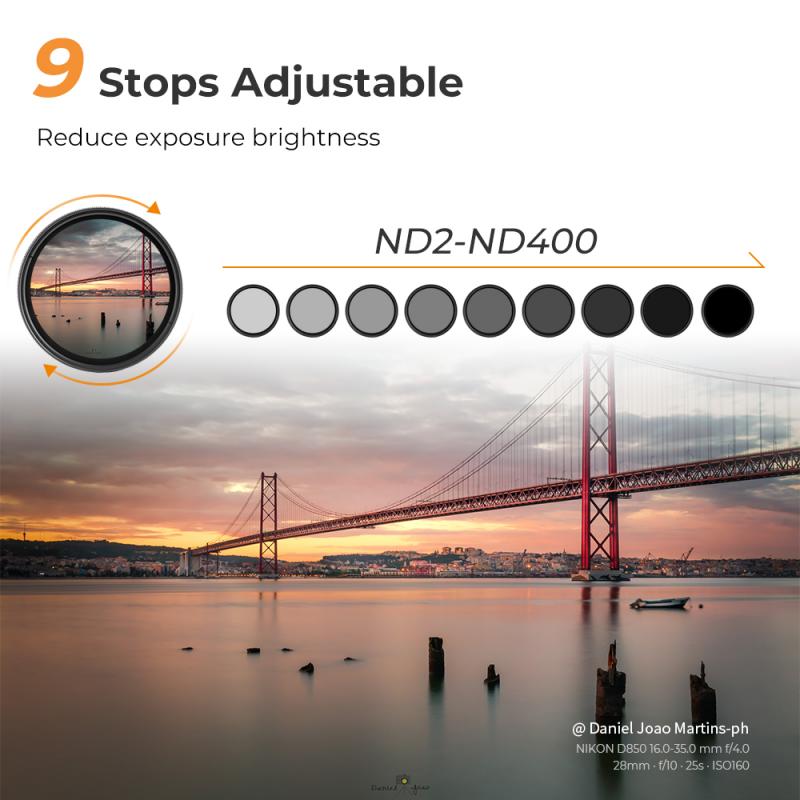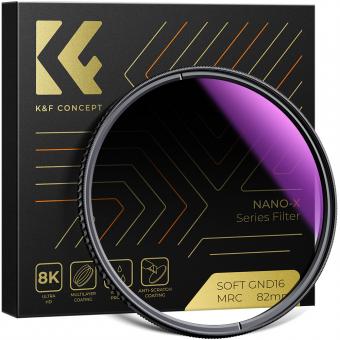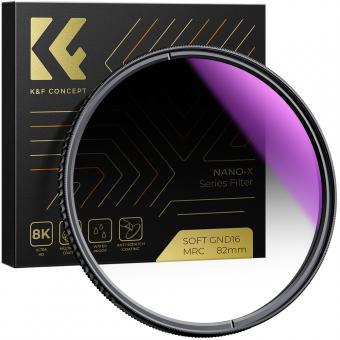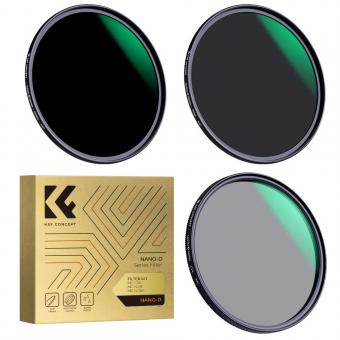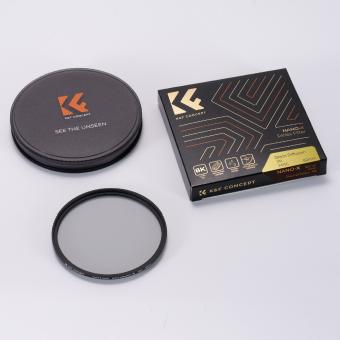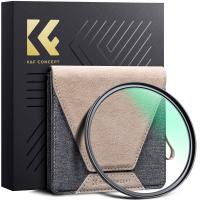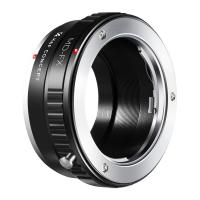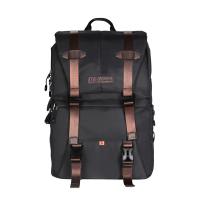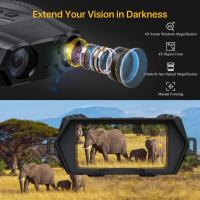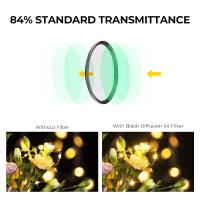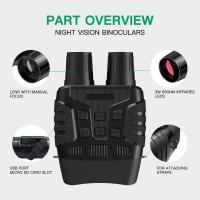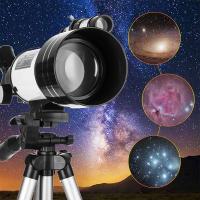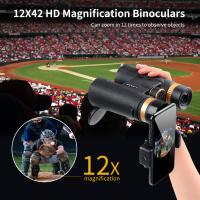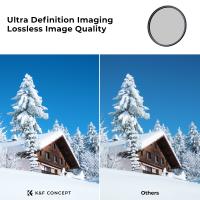What Does A Neutral Density Filter Do ?
A neutral density filter is a type of camera filter that reduces the amount of light entering the lens without affecting the color or hue of the image. It evenly decreases the intensity of all wavelengths of light, resulting in a uniform reduction in brightness across the entire image. This allows photographers to use longer shutter speeds or wider apertures in bright conditions, helping to achieve desired exposure settings or creative effects. Neutral density filters are commonly used in landscape photography to capture motion blur in waterfalls or create long-exposure shots in bright daylight. They are also useful in portrait photography to achieve shallow depth of field in well-lit environments.
1、 Reduces the amount of light entering the camera lens.
A neutral density (ND) filter is an essential tool for photographers and videographers. Its primary function is to reduce the amount of light entering the camera lens without affecting the color or hue of the image. By doing so, it allows for greater control over exposure settings and enables creative possibilities in various shooting conditions.
The primary purpose of an ND filter is to balance the exposure in situations where there is too much light. For example, when shooting in bright sunlight, the camera's aperture may need to be set to a small opening to avoid overexposure. However, this limits the depth of field and may not achieve the desired artistic effect. By using an ND filter, the photographer can keep the aperture wider while reducing the amount of light entering the lens, resulting in a well-exposed image with a shallow depth of field.
Additionally, ND filters are commonly used in long-exposure photography. When capturing subjects such as flowing water or light trails at night, a longer exposure time is required. However, in bright conditions, this can lead to overexposure. By using an ND filter, the photographer can extend the exposure time without blowing out the highlights, resulting in smooth and ethereal images.
Moreover, ND filters are also useful for video recording. They allow videographers to maintain a consistent shutter speed and frame rate in bright environments, preventing overexposure and maintaining the desired motion blur. This is particularly important when shooting outdoor scenes or events where lighting conditions may vary.
In recent years, the popularity of ND filters has increased with the rise of drone photography and videography. Drones often have fixed aperture settings, making it challenging to control exposure in bright conditions. ND filters provide a solution by reducing the amount of light entering the lens, allowing for more flexibility in capturing aerial footage.
In conclusion, a neutral density filter reduces the amount of light entering the camera lens, providing photographers and videographers with greater control over exposure settings and enabling creative possibilities in various shooting conditions. Whether it's balancing exposure in bright sunlight, capturing long-exposure images, maintaining consistent settings in video recording, or enhancing drone photography, ND filters are an indispensable tool for achieving optimal results.

2、 Balances exposure in high-contrast scenes.
A neutral density filter is an essential tool for photographers and videographers that helps balance exposure in high-contrast scenes. It is a filter that reduces the amount of light entering the camera without affecting the color or hue of the image. By doing so, it allows photographers to achieve a more balanced exposure in situations where there is a significant difference in brightness between the subject and the background.
In high-contrast scenes, such as a bright sky and a darker foreground, it can be challenging to capture both areas properly exposed in a single shot. Without a neutral density filter, the camera may struggle to capture the details in the brighter areas while the darker areas may appear underexposed. By using a neutral density filter, photographers can reduce the amount of light entering the camera, effectively darkening the brighter areas and allowing for a more even exposure.
Neutral density filters come in different strengths, measured in stops, which determine the amount of light they block. This allows photographers to choose the appropriate filter based on the specific lighting conditions and desired effect. For example, a stronger filter may be used to create long exposure effects, such as capturing smooth water motion or blurring moving objects.
From a contemporary perspective, neutral density filters continue to be widely used in photography and videography. They are particularly popular in landscape photography, where they help capture the dynamic range of a scene and create visually stunning images. Additionally, neutral density filters are also used in cinematography to achieve specific visual effects or control the exposure in bright lighting conditions.
In conclusion, a neutral density filter balances exposure in high-contrast scenes by reducing the amount of light entering the camera. It is a valuable tool for photographers and videographers, allowing them to capture well-exposed images in challenging lighting conditions.
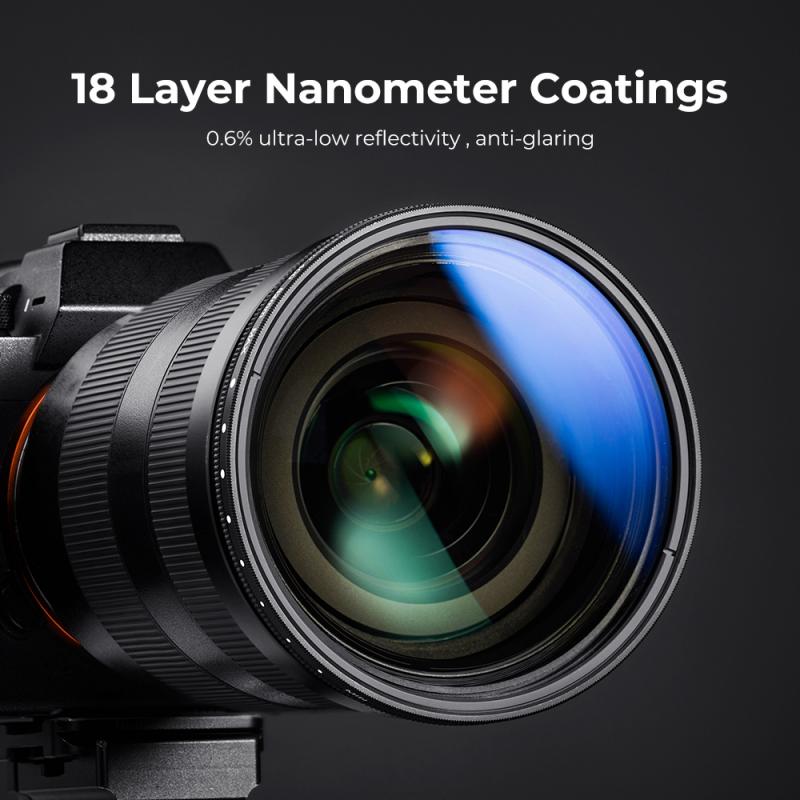
3、 Allows for longer exposure times without overexposing the image.
A neutral density (ND) filter is an essential tool for photographers and videographers, allowing them to control the amount of light entering the camera without affecting the color or contrast of the image. The primary purpose of an ND filter is to reduce the intensity of light, enabling longer exposure times without overexposing the image.
By reducing the amount of light that reaches the camera's sensor, an ND filter helps to balance the exposure in situations where there is too much light. This is particularly useful in bright outdoor conditions, such as when shooting landscapes or during midday sun, where the camera's shutter speed needs to be slowed down to capture motion blur or create a sense of movement.
The ability to use longer exposure times is especially beneficial in various photography genres. For example, in landscape photography, a longer exposure can smooth out waterfalls or create dreamy, ethereal effects with moving clouds. In astrophotography, an ND filter can be used to capture long-exposure shots of the night sky, revealing the movement of stars or creating stunning star trails.
Moreover, ND filters are also useful in videography, where maintaining a consistent shutter speed is crucial for smooth motion. By reducing the amount of light, an ND filter allows videographers to use wider apertures or slower shutter speeds, resulting in a more cinematic look with shallow depth of field or motion blur.
In recent years, the popularity of ND filters has increased due to advancements in digital photography and videography. With the rise of high-resolution sensors and improved dynamic range, photographers and videographers are now able to capture more detail in both highlights and shadows. ND filters play a vital role in achieving this balance, allowing for greater creative control over exposure and enhancing the overall quality of the final image or video.
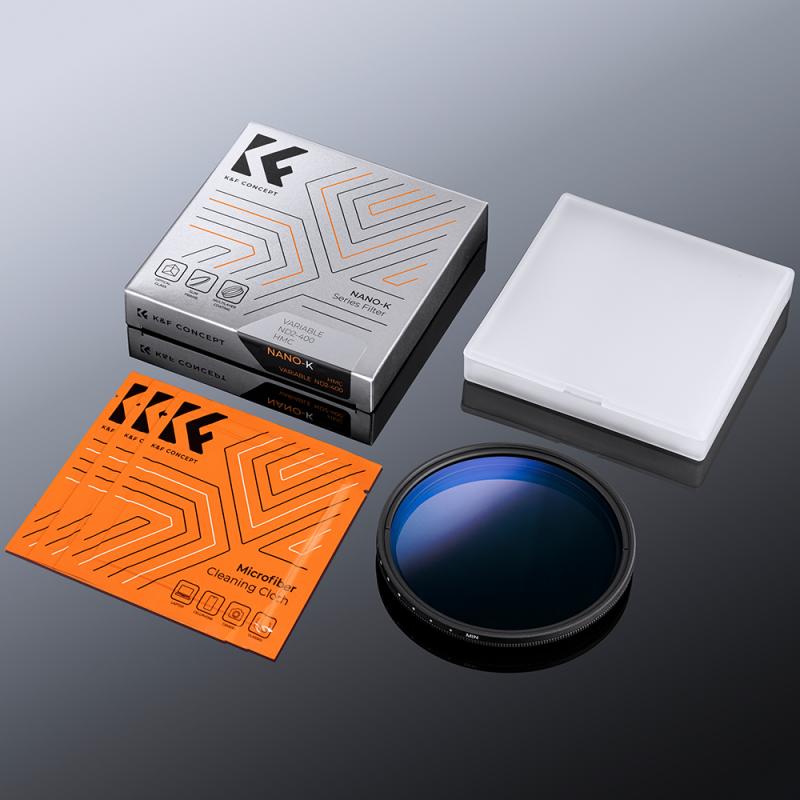
4、 Helps achieve motion blur effects in photography.
A neutral density filter is an essential tool in photography that helps achieve motion blur effects. It is a type of filter that reduces the amount of light entering the camera without affecting the color or tone of the image. By doing so, it allows photographers to use slower shutter speeds even in bright lighting conditions, resulting in motion blur effects.
Motion blur is a technique used to capture the sense of movement in a photograph. It can be used to create dynamic and artistic images, such as capturing the flow of water in a waterfall or the streaks of lights from moving vehicles at night. By using a neutral density filter, photographers can extend the exposure time, which in turn creates the desired motion blur effect.
In recent years, the use of neutral density filters has become increasingly popular among photographers. With advancements in technology, filters are now available in various strengths, allowing photographers to have more control over the amount of light reduction. Additionally, neutral density filters are now made with high-quality materials that minimize color cast and maintain image sharpness.
Furthermore, neutral density filters are not only used for motion blur effects but also for other creative purposes. They can be used to achieve shallow depth of field in bright lighting conditions, allowing photographers to blur the background and isolate the subject. They can also be used for long exposure photography, capturing the movement of clouds or creating smooth, silky water effects.
In conclusion, a neutral density filter is a versatile tool that helps photographers achieve motion blur effects and explore their creativity. With advancements in technology, these filters have become more efficient and offer greater control over light reduction, making them an essential accessory for photographers.
